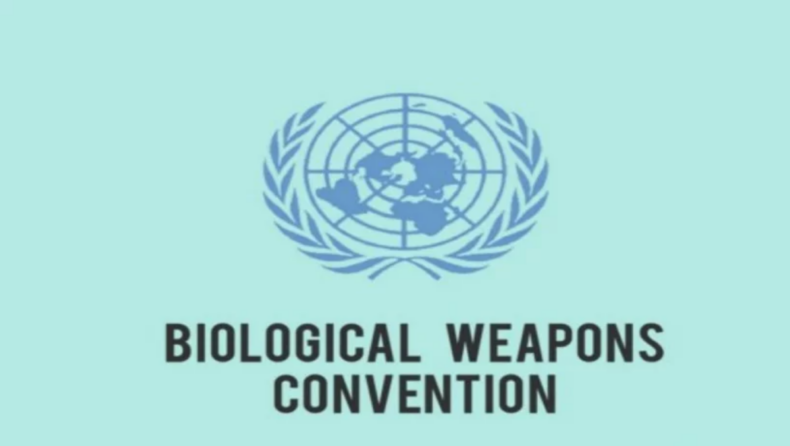
The World Health Organization (WHO) has been at the forefront of informing the public, investigating the origins of the novel coronavirus, and encouraging public health measures around the world since the outbreak began.
The Biological Weapons Convention is a separate international agreement that is similar in some ways to the regulations that guide the health body. The treaty has the potential to play a vital role in preventing deliberate biological attacks that could cause a pandemic.
The International Health Regulations, which underpin the WHO, overlap with the bioweapons treaty. Both rely on governments’ ability to monitor disease outbreaks, provide protective gear and healthcare countermeasures, and ensure lab biosafety and security.
COVID-19, bioweapons, and preconceptions
The pandemic raises several related issues for members of the Bioweapons Treaty to contemplate and debate. One of the issues is how COVID-19 has influenced the threshold for a deliberate attack?
Some countries have done a fantastic job of keeping the virus out of their borders, while others have seen devastating waves of infections. More than 29 million cases of COVID-19 have been reported in the United States. Meanwhile, the pandemic began in China, which has only 100,000 people.
Therefore, the members of the Bioweapons Treaty should look into how the threat of biological weapons has changed as a result of the disparate responses to COVID-19.
Time to confront some challenging issues
In the event of a major biological attack, the Biological Weapons Convention is severely lacking in personnel. The implementation support unit for the treaty is limited to coordinating frequent meetings and conferences. The support staff is unlikely to play any role in the event of a biological attack.
The Chemical Weapons Convention, on the other hand, has the Organization for the Prohibition of Chemical Weapons. It has the ability to monitor the elimination of declared chemical weapons in Syria, for example. The bioweapons treaty’s support unit would be incapable of carrying out such a mission.
Some have questioned whether the Biological Weapons Convention should be revised since its inception to confront one of the treaty’s most serious flaws: the lack of transparency and verification provisions. The arms control community has discussed the issue since the treaty’s inception in 1975.
The Bioweapons Treaty: A New Role?
The rapid development of vaccines, many of which were developed through public-private partnerships, demonstrates the importance of international collaboration between governments, industry, nonprofits, and academia in combating the pandemic. However, world governments have been unable to adequately fund the distribution of vaccines in too much of the world.
Some government investments in science and technology, particularly biomedical research, have paid off handsomely, allowing vaccine makers to produce effective vaccines so quickly. Scientists were able to produce the first two vaccines that earned emergency use authorization like in the United States. Thanks to projects like the Human Genome Project and research into messenger RNA.
Members of the Bioweapons Treaty should work together to identify future areas for research and development that could aid in the preparation for future pandemics or biological attacks.
While investments helped the vaccines succeed, research and development shortfalls in other areas contributed to the government’s harsh reaction to COVID-19.
Biosurveillance is clearly an area where government funding has fallen short of what is required. Environmental sampling; accurate and rapid point-of-care diagnostic tests; the ability to genetically sequence large numbers of samples quickly to accurately assess virus shift and drift; contact tracing capability; and well-staffed public health organisations capable of assisting with environmental surveillance and supporting decision-makers are all elements of biosurveillance. It would be beneficial to identify and redouble efforts in underperforming areas such as biosurveillance.
Conclusion
The COVID-19 pandemic has shown that no country can be considered safe until it has adequate vaccinations and medical countermeasures. Until then, the virus will continue to infect people and mutate, posing a worldwide threat.
Members of the Bioweapons Treaty should start thinking about how to prepare for future biological attacks or pandemics. The COVID-19 crisis should be sufficient motivation for these serious discussions.













